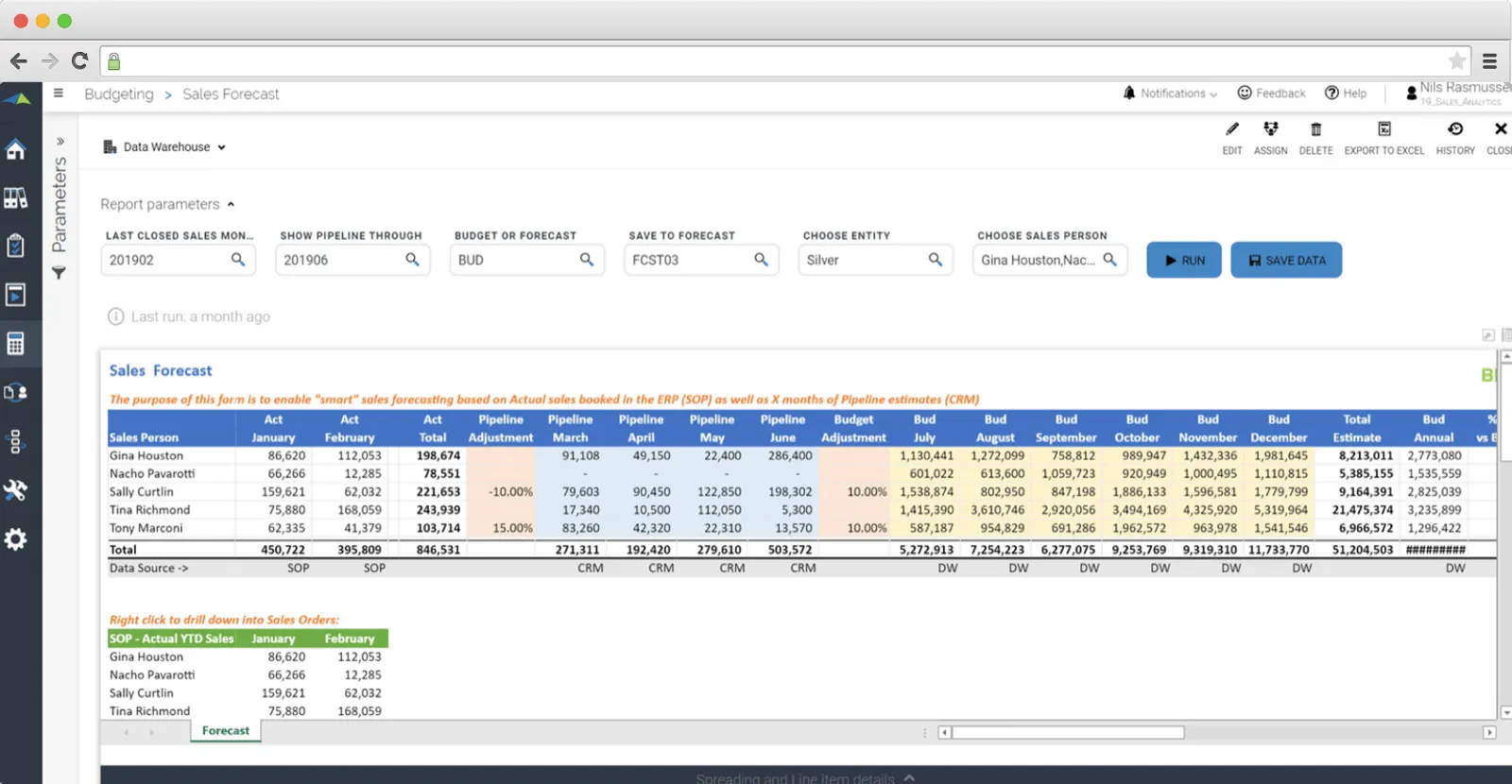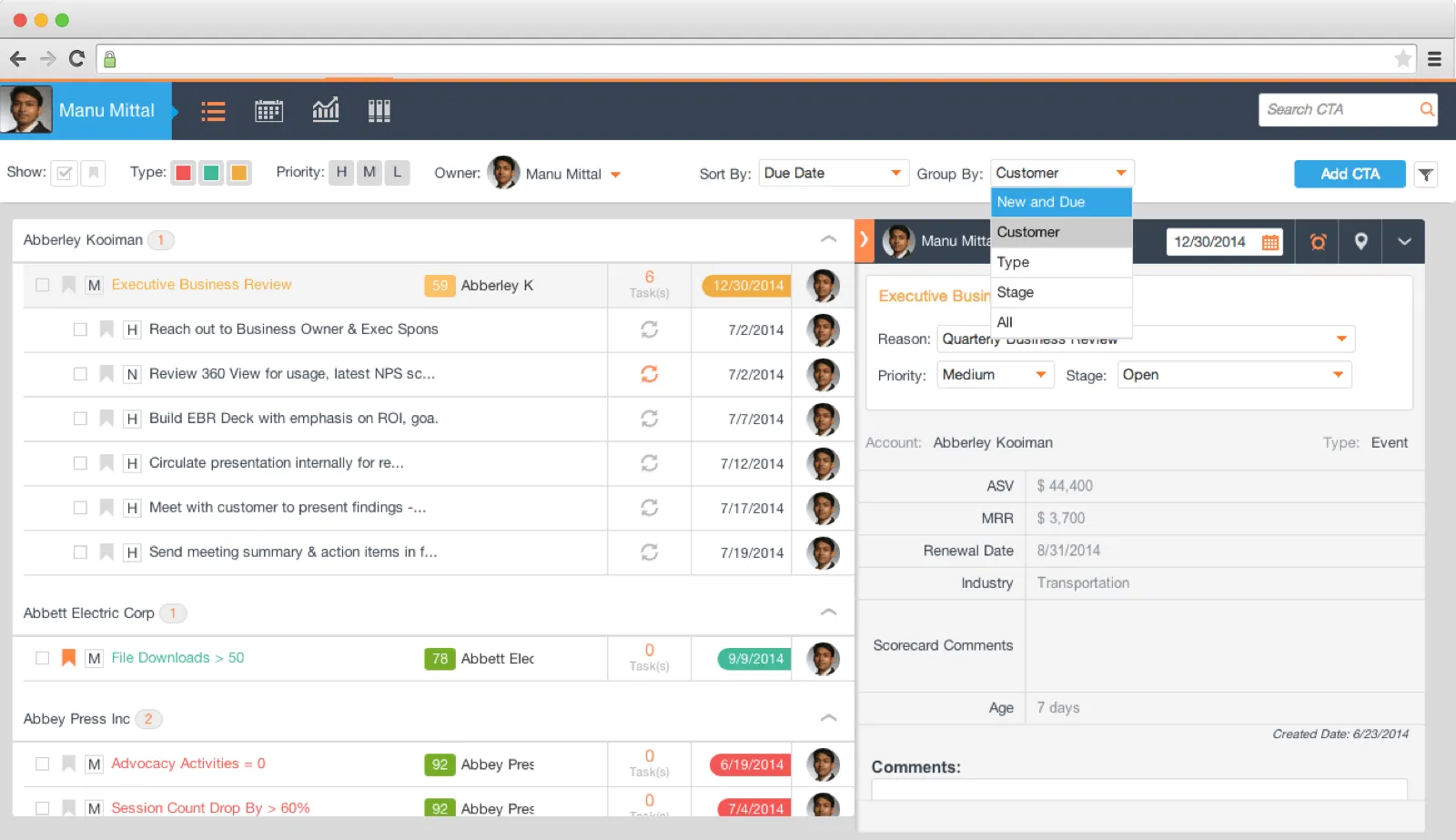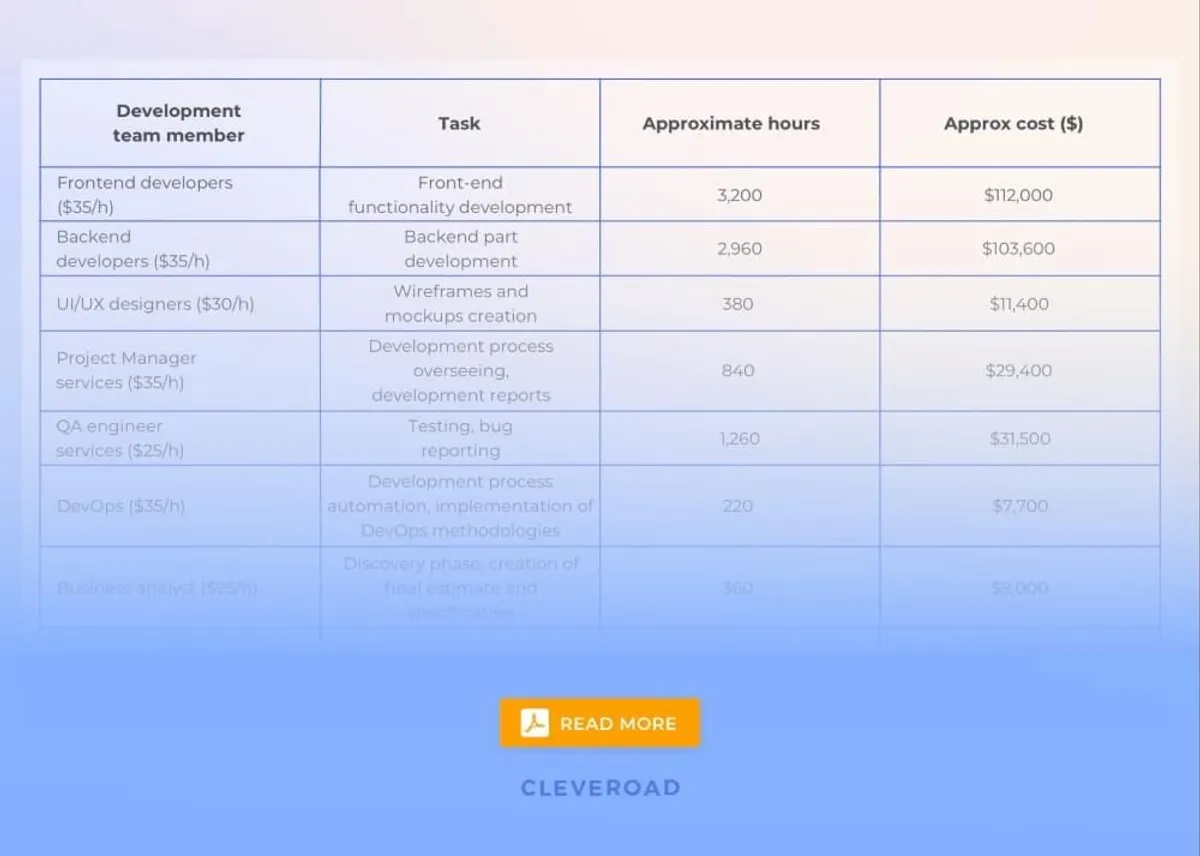Explaining How Much Does it Cost to Build a CRM System in 2024
Updated 12 Mar 2023
14 Min
2385 Views
In the modern world, it’s difficult to imagine an effective company without CRM embedded in workflows. And this is not surprising since CRM can greatly optimize all operations and boost a company's conversion rate by up to 300%.
When it comes to introducing CRM into workflows, companies can choose one of three paths:
- Out-of-the-box solution. The company chooses a ready-made CRM from the vendor and pays a fixed price for using it on a monthly or yearly basis.
- Customization of ready-made CRM. Pretty much the same as an out-of-the-box solution, but the company tweaks its functionality to comply with business needs.
- Create custom CRM from scratch. The name speaks for itself. The company decides to make its own CRM with all business needs and goals in mind.
As a software development company, we’ll focus on creating a custom CRM from scratch and go over such vital topics as custom CRM development cost, pros and cons of a custom CRM, must-have features, CRM development services flow, and more.
Ready-Made CRM vs. Modification vs. Custom CRM
Before proceeding to the analysis of the custom CRM development cost, it’s worth comparing this path with others. This will give you a clearer picture why creating a custom CRM is the right choice in most cases.
Ready-Made CRM: Pros and Cons
Buying a ready-made CRM is often the first thought that appears in mind when a company decides they need a solution for customer management. This idea has the right to life since there are more than 650 different CRMs on the market created to help businesses from various industries. But is everything so rosy with this option?
Let's take a look at the main strengths and weaknesses of ready-made CRMs.
Pros
- Onboarding materials. Many CRM vendors provide onboarding materials like tutorials, guides, and webinars that briefly explain to customers how to use their CRM system.
- Fast implementation. Ready-made CRM is always the fastest option since vendors provide qualified personnel to help customers with the CRM implementation process.
- Trial versions and periods. A lot of CRM systems come with a trial period that lets customers try them out and make a risk-free decision whether it’s worth spending time and money on or not.
Cons
- Redundant features. A ready-made solution often has a long feature-list to cover all possible scenarios the target audience may use it for. As a result, there’s a great chance to pay for features that’ll be useless in your particular case.
- Limited customization. It’s a pretty tricky task to tweak off-the-shelf CRM, so your staff must embrace all out-of-the-box strengths and weaknesses since scaling and upgrading it may require adding new features or be impossible at all.
- Update issues. CRM vendors can change their products as they see fit, and updates can be either good or bad for you. Functionality can be overhauled, features can appear and disappear, and you should always be ready for these changes and quickly adapt to them.
- No competitive edge. You gain no advantage since you’re using the same business tools as your competitors.
- Long onboarding process. Staff onboarding can take a pretty long time, even with proper guides and 24/7 customer support. Besides that, mistakes may appear along the learning process.
- Expensive in a long-term perspective. Ready-made solutions require constant payment for use, which can be costly for medium and large-size companies. For example, you’ve chosen Zoho Enterprise CRM for your company of 50 employees. You’ll be paying around $32,000 each year.
CRM Modifications: Pros and Cons
If your business requires a slightly flexible approach, you can buy an off-the-shelf CRM system and modify its functionality to comply with your needs and goals. These modifications can include different third-party integrations, custom objects, fields, layouts, themes, and so on.
However, this option is tied with its own set of pros and cons:
Pros
- Relatively flexible option. You have an opportunity to adapt existing CRM to your business needs without integrating additional software into the workflows.
- Less tedious than custom CRM development. This option is much easier and less time-consuming in comparison to creating your own CRM.
Cons
- You’re still limited to the system’s capabilities. Not every CRM is tweakable in the way you want. Some CRMs may not support your modifications. Even if they do, you may not be satisfied with the end-result because customization may be quite problematic and full of workarounds.
- Tech expertise is required. If you’re not tech-savvy, it’s almost impossible to modify the CRM system. Some changes may require specific expertise or additional coding. As a result, you need to hire an employee with relevant expertise or turn to a CRM vendor for help.
- Double spendings. Besides paying for CRM monthly or yearly, you must spend time and money hiring tech specialists to modify your CRM. The rarer is the specialist you need, the higher the price for their services will be. For example, a Salesforce CRM developer will cost you around $116,000 yearly in the US.
Custom CRM Development: Pros and Cons
The last option is probably the most interesting one. You can create your own CRM taking into consideration your business needs and goals. This option unties your hands, and you’re limited only to the financial resources you plan to spend on custom CRM creation.
But keep in mind these pros and cons you’ll face when choosing this option:
Pros
- Made to comply with your needs. Custom-built CRM fully corresponds to your needs, goals, and business processes. There are no redundant features, useless modules, and weird UX/UI solutions since your CRM works the way you want. This is critical for healthcare industry. Custom option entails full compliance with all the laws required for healthcare CRM software development.
- Faster onboarding. Custom CRM is made with your workflows in mind, and as a result, staff will require less time to accommodate new software and make fewer mistakes along the onboarding process.
- You’re the sole owner. There’s no need to pay for a subscription or license since you’re the owner of CRM.
- Scalability. Depending on goals, you can lay the foundation of future business scaling in your custom CRM. All you need to do is explain to the tech partner how exactly you’ll expand your business in the future and what features will be needed for that.
- In-house or third-party software integrations. If business operations require specific integrations to run successfully, add this to the list you’ll show to a software development vendor. They’ll make sure that your custom CRM will smoothly connect to other software.
Cons
- High cost. Those benefits come with a significant price tag. Custom CRM development requires resources. But you can always consider hiring offshore developers to save time and money.
- Support and maintenance. Any software requires support, and since you’re the sole owner of CRM, its maintenance becomes your headache. Unless you enter long-term cooperation with a software development vendor to support CRM with tweaks and updates based on your needs, still it’ll require some spendings.
CRM Modules and Must-Have Features
Customer Relationship Management solutions are applied in a wide range of industries- from healthcare CRM implementation to logistics. Therefore, the functionality of the system may vary. It's vital to remember that features are one of the main price drivers of the custom CRM development cost. You need to clearly understand what CRM type you want and what features will be included there to fully satisfy business needs. To prevent you from adding redundant features to the list, we’ll go over CRM types and must-have features for business.
Let’s start with CRM types. They can be split into four classes, and each will be useful in specific tasks on different customer relationship levels:
- Operational CRMs. These systems are aimed at automating processes and achieving short-term goals.
- Analytical CRMs. After the Operational CRM has collected the customer information, it goes into the analytical system to assess customer behavior accurately.
- Strategic CRMs. These systems help to gather and store customer data for building long-term cooperation between business and customer.
- Collaborative CRMs. These systems help establish smooth communication with customers using phone calls, emails, websites, and social networks.
These CRM types can be combined into one system, which can include several modules that solve various problems of different departments of the company. To give you a more precise answer on how much does it cost to build a CRM, we’ll concentrate on Operational CRMs. We’ll go over main modules that greatly facilitate three main departments in many companies: sales, marketing, and customer support departments.
Find out more factors determining the cost of implementing CRM system functionality in our post
Sales Team Module
The Sales Team Module lets you automate routine tasks and significantly increase the efficiency of the Sales Department. It includes features that help to close deals faster, conveniently track leads, and many more.
Lead management
One of the main tasks of many CRM systems is to provide easy management of lead profiles. The sales department communicates with many clients, both current and new. To gather all information into one place, CRM must have convenient functionality for filling in information about leads, such as names, email addresses, phone numbers, customer ratings, negotiation statuses, and sales managers’ comments.

Teamgate lead management screen.
Sales analytics
Without convenient analytics features, the sales department won’t know about its success and can’t change its workflows to achieve higher goals. Many CRMs use convenient dashboards where all the necessary information is displayed using charts, tables, and diagrams. This info can include the leads growth, the number of successfully closed deals, and more.

Zoho analytics dashboard.
Sales planning
One of the essential features for most CRMs is the Sales module. Its main goal is to provide convenient functionality for creating sales plans, setting new goals and objectives for the department. In popular CRMs, these features look like spreadsheets or calendars. Sales managers fill in tasks and goals that must be completed for each month, and every employee at the department can see them.

Solver Sales forecasting.
Marketing Team Module
The main task of this module is to automate marketing processes that aim to create successful marketing companies and reach the desired audience.
Campaign management
The marketing department creates specific marketing campaigns based on certain events. All campaigns aim to attract potential leads, and for more convenient companies running this module exist. For example, one of the events is a promo video for a social network. The manager adds all the necessary information to the event, such as invoices, spreadsheets, scripts, and more. All information is conveniently stored in one place with access for all department employees.

ActiveDemand marketing campaign management.
Customer segmentation
To create accurate campaigns, the marketing department must correctly assess the audience and segment it according to behavior and potential profitability. CRM systems can provide these operations thanks to a certain feature set. These features are usually designed in the form of charts that marketers can study, filter, and modify.

Gainsight customer segmentation.
Analytics
Information is the key to success, and the marketing department also needs to analyze the results of its work. Convenient dashboards can show how successful marketing campaigns are, ROI, and other useful information vital for further decision-making.

Hubspot marketing analytics.
Customer Support Module
Any business working for the benefit of customers can’t make it without a well-established custom support process. The customer support module is designed to automate the department’s routine tasks and increase the assistance quality provided to clients.
Help desk and agent console
All help requests must be saved in one place. For this purpose, there is a Help desk feature in most CRM systems. This board helps to conveniently distribute support tickets among agents and also mark at what stage those tickets are. Besides that, the agent console lets you collect all help requests from various sources, such as emails, chat messages, tweets, and more.

Freshdesk support help desk.
Knowledge base
This feature is pretty simple. This database includes answers to the most frequently asked questions. Support managers can share the answer from this database with the customers for self-service. This greatly speeds up the whole process and provides more time for more serious requests that require in-depth expertise and attendance of the support manager.

Creatio knowledge base.
Support analytics
Like any other department, it’s important for a support department to understand the effectiveness of its activities. The appearance of this functionality does not differ much from the functionality of other departments. This can be a dashboard with statistics about the number of customer requests, issues, and the speed of support managers’ problem-solving.

Dynamics 365 support analytics.
Custom CRM Development Cost in 2024
Now it’s time to dive into numbers. Our business analyst made a development estimate of the CRM system that consists of three modules mentioned before. Click on the picture down below to download full PDF file.
This estimate is APPROXIMATE and based on MPV features only.
CRM Development Pipeline
We’ve revealed the CRM development cost and team structure for successful CRM creation. Now it’s time to talk about CRM development flow step-by-step. This information will give you a clearer picture of how an idea can transform into a full-fledged working product.
Note: This flow is related to programming outsourcing only. If you choose a different CRM development path, the pipeline may differ.
Step #1. First Contact
Let’s assume that you’ve spent a lot of time searching for outsourcing software development companies. Now you’ve picked the most suitable one and left a CRM development application on their website. This application goes straight to the Business development manager. Once the application is processed, the manager contacts you to schedule a more detailed conversation about your project.
Step #2. Discovery Phase
This stage is vital for development since it helps to shape out the idea. Discovery phase consists of meetings where a business analyst is gathering information about your business, goals, and project idea. When all information is gathered, the business analyst compiles it in a detailed specification, which helps make a final project estimate. Besides that, UI/UX designers create wireframes for each app screen during the discovery phase.
Step #3. UI/UX Design
When prep-work is set and done, UI/UX designers start making mockups for the future app. They use wireframes created during the Discovery Phase, your requirements, and modern UI/UX design methodologies that help create top-notch mockups that comply with your desires and personal vision.
Learn how a well-established UI/UX design process helps create both functional and user-friendly designs.
Step #4. Development Process
Once the design process is finished, designers pass all mockups to the development team. Developers transform eye-appealing mockups into a working product using their tech expertise. The development consists of sprints. During each sprint which usually lasts two weeks, developers must implement a certain part of the product’s functionality.
Step #5. Quality Assurance
It’s impossible to roll-out a bug-free product without proper testing. During this stage, QA engineers conduct precise quality tests that help in seeking bugs and malfunctions. When tests are done, QA engineers pack results into bug reports and pass them to developers. Bug reports show the state of the program during which the problem occurred. This information helps developers to recreate the bug and quickly fix it.
We’ve made an in-depth overview of QA processes to shed light on this important development stage.
Step #6. Release
Developers make final polishing and tweaks to make sure everything works as intended and ready for release. Once polishing is done, the development vendor passes the CRM system to its owner.
Step #7. Support and Maintenance
In some cases, cooperation doesn’t end after CRM release. Developers can continue their work on the product. This work can include various updates, new features and maintenance work based on customer’s feedback.
Cleveroad Experience
Cleveroad is a professional software development company located in the most known European outsourcing destination - Estonia. We have extensive experience in creating business solutions across different industries.
We help businesses build powerful CRM systems, and one of our recent projects is a CRM modernization for a microfinance company. We were challenged to reengineer the outdated CRM system and provide high scalability to cope with growing business requirements.
This project is under NDA, so we can’t share much about it. But you can check other projects in our portfolio.
Want to build a CRM?
Drop us a line to get free consultation from our representative and free of charge project estimate.
CRM development cost depend on CRM type and number of features in it. The more features you want, the longer development will be and the more development will cost. The approximate cost of CRM with vital features only can be around $300K.
If you outsource CRM development, the whole process will include these steps:
- Step #1. First contact
- Step #2. Discovery phase
- Step #3. UI/UX design
- Step #4. Development
- Step #5. Quality Assurance
- Step #6. Release
- Step #7. Support and maintenance
You can choose between four types of CRM systems: Operational, Analytical, Strategic, Collaborative.
Custom CRM development has several significant benefits:
- Custom CRMs fully comply with your needs.
- Faster onboarding.
- You’re the sole owner.
- Great scalability and third-party integrations opportunity.

Evgeniy Altynpara is a CTO and member of the Forbes Councils’ community of tech professionals. He is an expert in software development and technological entrepreneurship and has 10+years of experience in digital transformation consulting in Healthcare, FinTech, Supply Chain and Logistics
Give us your impressions about this article
Give us your impressions about this article
